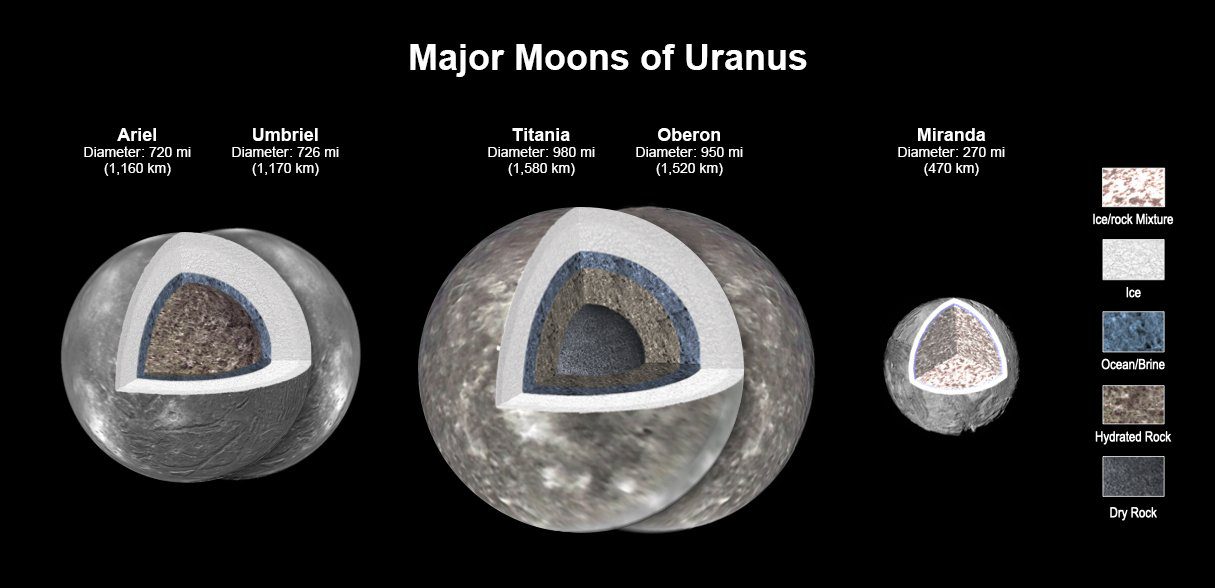Moons and dwarf planets with buried oceans are fascinating worlds – the presence of an ocean implies internal activity, and there could be a chance that they are habitable. There is a lot we don’t know about their formation and evolution. New studies suggest that they could be a lot more common, including around the planet Uranus.
Thinking of icy moons, we usually immediately consider Europa or Enceladus. They have a deep ocean underneath a (relatively) thin ice shell. But there is evidence of ocean-like activity on so many moons and dwarf planets that scientists decided to take a second look at data collected by Voyager 2 as it flew by Uranus in 1986.
Using better models than were available back then and combining them with ground-based observations, the team set out to understand the interior of Uranus’ five major moons: Ariel, Umbriel, Titania, Oberon, and Miranda. Apart from the smallest, Miranda, the modeling for the other four supports the idea of a deep ocean underneath a thick layer of ice.
Four out of five of the largest moons of Uranus might have an ocean. Image Credit: NASA/JPL Caltech
“When it comes to small bodies – dwarf planets and moons – planetary scientists previously have found evidence of oceans in several unlikely places, including the dwarf planets Ceres and Pluto, and Saturn’s moon Mimas,” lead author Julie Castillo-Rogez of NASA’s Jet Propulsion Laboratory said in a statement. “So there are mechanisms at play that we don’t fully understand. This paper investigates what those could be and how they are relevant to the many bodies in the solar system that could be rich in water but have limited internal heat.”
The models were informed by observations from four other missions. NASA’s Galileo studied Jupiter and its moons, Dawn visited asteroid Vesta and dwarf planet Ceres, New Horizons flew by Pluto and Charon, and Cassini studied Saturn’s system. The moons of Uranus are between the size of Pluto and Ceres.
A crucial element for the model is establishing how porous the moons are. The researchers are interested in understanding if these moons could keep internal heat – if they can’t, oceans will freeze over. Titania and Oberon, the largest moons, could have oceans warm enough to be habitable.
Ariel and even little Miranda have evidence of geologically recent surface changes. Miranda is too small to have kept much internal heat, but Ariel might have ice volcanos. These moons clearly have potential, but major questions remain about how well these models describe these icy worlds.
“We need to develop new models for different assumptions on the origin of the moons in order to guide planning for future observations,” Castillo-Rogez explained.
The work is published in the Journal of Geophysical Research Planets.
Source Link: Four Moons Of Uranus Might Have Oceans
